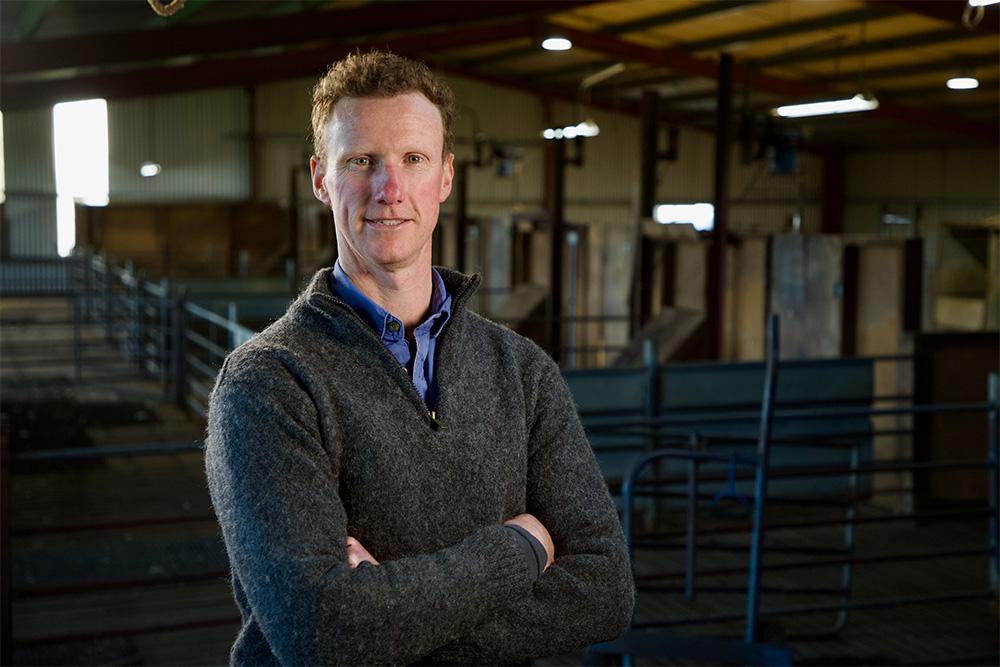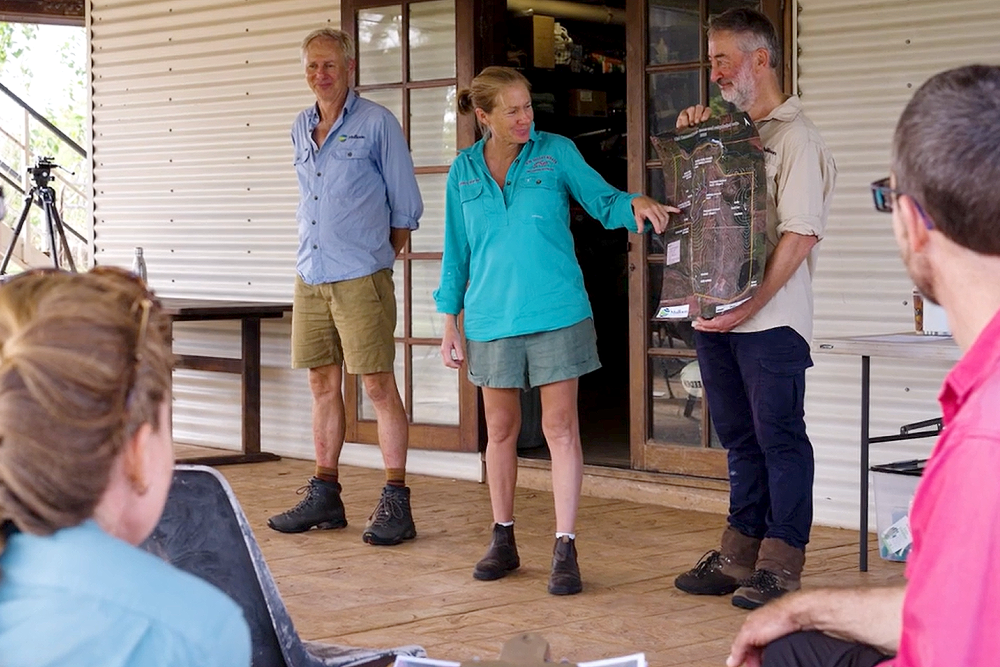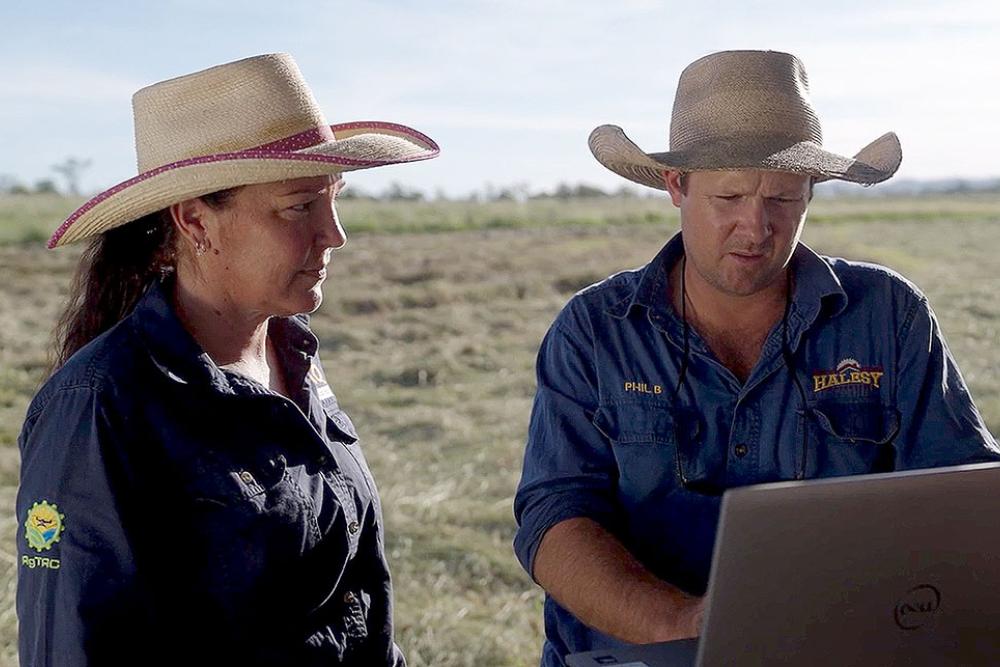It was the poor condition of their land in Queensland’s Central Highlands which forced graziers Greg and Sonya Spencer to start adapting their practices to drought.
“If we wind the clock back five years and we were standing here, you’d be thinking you were standing in a desert. There was no grass, we had no grass,” Greg said.
Making gradual changes to their management system over time has seen the Spencers achieve huge gains for both their cattle and country.
Their ‘Mayfield’ property is now one of five demonstration sites used by the Central Highlands Regional Resources Use Planning Cooperative (CHRRUP) to show other graziers how adopting drought resilient practices can rehydrate the landscape and improve soils and water.
The project, funded by the Future Drought Fund’s Drought Resilient Soils and Landscapes Grants Program, allowed the Spencers to install two tanks and two troughs, as well as 11 kilometres of fencing to better manage their grazing pressures.
But Greg and Sonya aren’t stopping there.
“The funding will allow us to split a 1,000-hectare paddock into five [cells]. Then I’m going to double it, so the paddock will be spilt into 10 within the next 12 months,” Greg said.
Despite some initial hesitation from Greg, who struggles with technology, drones have delivered big wins for the Spencers.
“I can muster a 1,000-acre paddock in an hour and use three or four [drone] batteries. Whereas, if I jump on a buggy, that’s 10 litres of fuel. It’s not only saving time, it’s saving money. If I have a problem, I just ask one of the kids.”
The Spencers say the help they’ve received from industry experts through the Future Drought Fund means they now look at their country differently.
“It just makes more business sense to go in the direction we’re going. We don’t know what’s around the corner. So, we’re trying to be proactive and not reactive and be ahead of the ball game,” Greg said.
“We’re always thinking about the next dry and now is the time to build resilience—when you’ve had a good year.
“To do that is to monitor your grass, keep your grazing pressures controlled and then you’re set up for the next dry.”
See how Greg and Sonya control their grazing pressures
Video duration 4 mins 39 secs
Introduction
This is the transcript of a video case study produced by the Central Highlands Regional Resources Use Planning Cooperative (CHRRUP) for a program funded by the Australian Government’s Future Drought Fund.
Learn more about the Drought Resilient Soils and Landscapes Grants Program.
Transcript
[Recording begins]
Greg Spencer [0:02]:
If we wind the clock back five years ago and we were standing here, you would have…Like the country's looking magic at the moment, five years ago you'd be thinking you were standing in a desert. It was pretty ordinary, there was no grass. We had no grass. 2018 is when we really cracked this management system up and there's been massive, massive gains. And you can really see it in the country and the cattle.
Sonya Spencer [0:31]:
We're hoping to regenerate the land and improve everything not just sustain but to improve it as much as we can. This northern-side of the highway is a little bit further ahead because we have already cut it down to 40 hectare paddocks and moving the cattle around. So, we move the cattle into a paddock, so all the cattle are in one mob. So, we've got a large mob of cattle and then we put them into a small paddock for a short duration of time and the dung the urine, they break the soil up. And then we take them out of that paddock, move them onto another paddock and then that paddock is rested.
Greg Spencer [1:17]:
I suppose we're looking at it different, looking at the country differently now. So, it just makes more business sense to go in the direction that we're going. We sort of don't know what's around the corner, either from extreme weather events or from political events. So, we're trying to be proactive not reactive and be ahead of the ball game.
[1:49]:
So, the project will fund us for two tanks and two troughs and 11 kilometres of fencing. But that's not where I'm stopping. So, there's a 9,90 hectare, say a thousand-hectare, paddock. The funding will allow us to split that into five. So, then I'm going to double that, so the paddock will be split into 10 within the next 12 months.
[2:09]:
This is a mapping program I use. The best way to split your paddocks is to use country type. So, the brown is actual. This is proposed fencing. So, where I've fenced is creek; that's ridge; so flat; creek; ridge. So, we've got country type in each paddock. I then transferred those paddocks to my phone, get on the dozer. I can put the image up on my phone, stick it on the phone holder in the dozer, and just head. So, I can clear my lines without having to get out and sight. Som it's just all time saving.
[2:59]:
So, with the drones we've probably been using them for 12-months now. My daughter bought one and she started to use it on the cattle. I thought, ‘Oh yeah, well, you know it might work’. But they're a very, very handy tool. You know, it might take a little bit of sitting here to work it out. But once you get it going, it's just another time-saving device. I can muster a thousand-acre paddock in an hour and use three or four batteries. Whereas if I jump on a buggy, that's 10 litres of fuel. I don't know but you know for the cost of a few batteries. And so it's not only saving time, it's also saving money. If I have a problem, I just let the kids know, they’re just all over it. They know how to work it. They're a great tool.
[3:52]:
There might be a bit of hesitation to get into it because, ‘I know I can't work a computer, yeah, yeah’. But I can't either. But you just, you know, ask a kid. Yeah, ask someone in the family and you'll get by, you'll work it out.
[4:11]:
We're always thinking about the next dry and now is the time to build your resilience, is when you've had a good year. And to do that is to monitor grass, keep your grazing pressures controlled. And, yeah, then you’re set up for the next dry.
[Recording ends]



